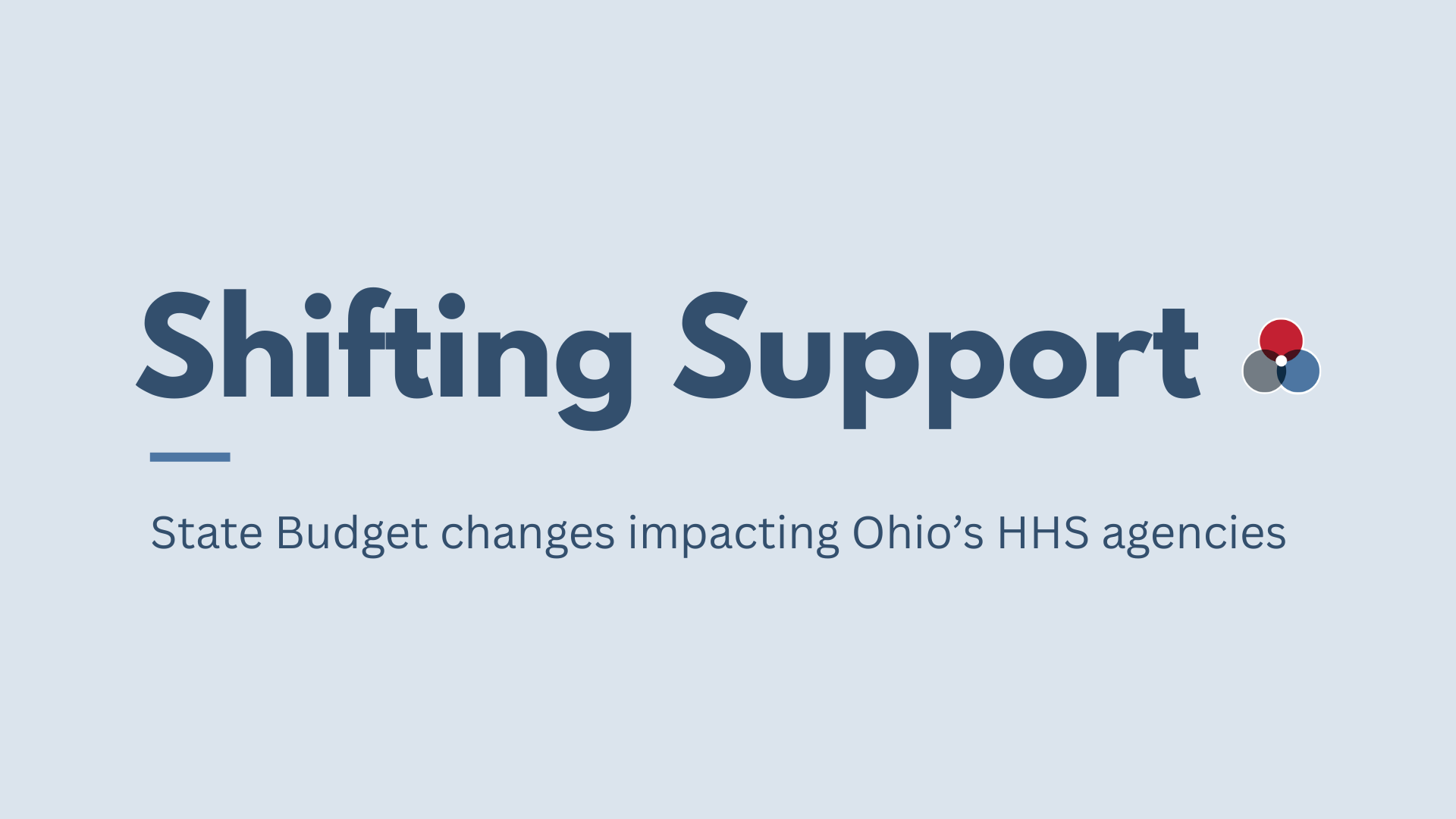By: Sarah Hudacek, Policy AssistantHope Lane, Public Policy & External Affairs Associate
Introduction
The social safety net, also known as public assistance, public benefits or the welfare system, is comprised of several programs designed to assist and protect those with low incomes from extreme poverty and hardship. While many programs are means tested – meaning financial circumstances determine eligibility – and time limited, the income limits vary widely, and eligibility does not always align. Some programs, such as the Special Supplemental Nutrition Program for Women, Infants and Children (WIC) determine eligibility solely based on federal requirements, while other programs, such as Publicly Funded Child Care (PFCC), have more flexibility and eligibility is determined based on individual states’ rules. There are other programs, such as the Supplemental Nutrition Assistance Program (SNAP), that are entitlements, meaning anyone who is eligible can receive assistance, while those like Temporary Assistance for Needy Families (TANF), have fixed funding and cannot always serve all eligible families. Regardless, while many of these programs are administered locally, either through the county or state government, they are all issued in tandem with the federal government.
While many safety net programs have been around in some form since the mid-20th century, the COVID-19 pandemic highlighted just how crucial the safety net is by spotlighting successes and gaps.
States are required to share in the cost of either administering and/or paying for many social safety net programs such as Medicaid, TANF and PFCC, as a condition of eligibility for federal funding. This funding, sometimes in the form of maintenance of effort (MOE), where the state must maintain a certain level of funding, and in other cases a state funding match, is routinely outlined in Ohio’s biennial budget and is paid for using general revenue funds (GRF) or in-kind dollars.While many safety net programs have been around in some form since the mid-20th century, the COVID-19 pandemic highlighted just how crucial the safety net is by spotlighting successes and gaps.
Food Assistance
As previously mentioned, the federal government allows states to have more autonomy over some programs than others. For instance, while SNAP beneficiaries must meet both a gross and net income limit, states can be flexible with eligibility and execution of the program. The United States Department of Agriculture (USDA) Food and Nutrition Service (FNS) has long created a multitude of waivers and flexibilities for state agencies to adopt to tailor their program as they see fit. The Elderly Simplified Application Project (ESAP) is an example of one that is included in the state budget as a project the Ohio Department of Job and Family Services (ODJFS) Director must apply for. ESAP is a combination of waivers that creates a demonstration project to increase SNAP participation among the elderly low-income population by streamlining the application and certification process.Although the ESAP demonstration is designed for households with only elderly and/or disabled members with no earned income, approval of Ohio’s ESAP project is anticipated to impact approximately one third of Ohio’s SNAP caseload. These households participate in SNAP at much lower rates than other groups and are in a financial situation unlikely to fluctuate often, if at all. The project typically combines at least two of the following waivers:
- Extend certification period to 36 months (a majority of households are currently on a 12-month certification period)
- Waive the interim reporting requirement (typically occurs every six months; beneficiaries are still required to report changes as applicable)
- Waive the recertification interview (beneficiaries or JFS can still initiate an interview if needed)
ESAP demonstration projects in other states have also utilized a simplified two-page SNAP application, and made use of data matches – where applicants’ financial and non-financial information is verified against other data sources – to reduce the amount of client-provided verification.While employing ESAP is likely to increase SNAP participation and decrease churn among older Ohioans who have low-income, it will also substantially reduce county workloads and allow more time for caseworkers to assist clients directly.
The budget includes several provisions intended to address integrity in public benefit programs.
Additionally, the budget includes several provisions intended to address integrity in public benefit programs generally, including a requirement for ODJFS to: enter into data matching agreements to determine eligibility, collect information on suspicious SNAP transactions, and work with the Department of Administrative Services and the Department of Medicaid to use identity management tools. In this same vein, the budget established the Public Assistance Benefits Accountability Task Force, comprised of relevant state agencies (Ohio Department of Medicaid, InnovateOhio and ODJFS), members from both legislative chambers, a small business owner and more, to review programs, fraud prevention efforts, and best practices and prepare a report for the General Assembly that is due 18 months after the first meeting of the Task Force.
Temporary Assistance for Needy Families
Community Solutions recently wrote about the 25th anniversary of the Temporary Assistance for Needy Families (TANF) program. TANF is delivered as a block grant, meaning that Ohio receives one lump sum of federal funding each year that can be used to fund a variety of programs, with minimal federal requirements on where funds can be directed and who they can serve. One of the few federal program requirements is that TANF funds must be used to achieve at least one of TANF’s four program goals:
- Assisting needy families so that children can be cared for in their own homes;
- Reducing the dependency of needy parents by promoting job preparation, work and marriage;
- Preventing out-of-wedlock pregnancies; and
- Encouraging the formation and maintenance of two-parent families.
Recipients and beneficiaries of TANF programs must also be a family with a child and have incomes below 200 percent of the Federal Poverty Level (FPL), though most eligibility is set much lower.In Ohio, TANF funds a variety of programs, the largest of which include Ohio’s cash assistance program, called Ohio Works First (OWF), Publicly Funded Child Care (PFCC), and a short-term emergency assistance program called Prevention, Retention, and Contingency (PRC). Each of these programs is administered through ODJFS.The Center for Community Solutions has consistently advocated for 1) the creation of a long-term plan for the TANF program to ensure funds are being used to support programs that address low-income Ohioans’ immediate needs, including housing, income support, child care, food, and work supports; 2) increased data reporting on TANF spending that outlines investments, expenditures, and outcomes; and 3) for TANF’s underspent dollars to be re-invested into TANF’s sustainable core programs.Increasingly each year, more and more millions of TANF dollars are “earmarked” in the budget process. Earmarking is when a particular revenue source is dedicated to a specific use. These earmarks are directed to programs, nonprofits, companies, and entities across the state who are engaged in often meaningful and vital services, with some of the largest recipients being the Ohio Association of Foodbanks, the Ohio Alliance of Boys and Girls Clubs, the Ohio Children’s Trust Fund, Children’s Hunger Alliance, Big Brothers Big Sisters of Central Ohio, and the Ohio Council of YWCAs, to name just a few. Some of the more local recipients of TANF funding in this budget include Birthing Beautiful Communities, University Settlement, and the Sisters of Charity Foundation, all in the Cleveland area. While these are worthy and necessary investments, funding originating from TANF is difficult to spend. Not all of the Ohioans these organizations serve may be eligible for TANF-funded services. Any earmarked dollars that are not able to be spent by the recipient entity are returned to what’s called the TANF underspend account, and Ohio has one of the largest in the nation.
Any earmarked dollars that are not able to be spent by the recipient entity are returned to what’s called the TANF underspend account, and Ohio has one of the largest in the nation.
While this year’s budget did not create a long-term TANF spending plan, it did include a provision that would require ODJFS to submit a TANF Spending Plan to the Governor in non-budget years. As it stands, TANF spending information is only reported when the Governor releases the executive budget to kick off the state budgeting process in odd-numbered years. This additional reporting will allow for insight into TANF program operations and where gaps exist in supporting low-income Ohioans. This can serve as a crucial stepping stone to more robust data, outcome reporting, and a long-term plan.Other TANF-funded programs such as OWF, PRC, and the Comprehensive Case Management and Employment Program (CCMEP), an education and training program for Ohioans age 14 to 24, remained unchanged in this year’s budget.
Child Care
The federal guidelines for receiving Child Care and Development Fund (CCDF) dollars, the block grant that funds PFCC, require that families have income below 85 percent of the state median income, have children who are under age 13 or children with disabilities, and meet one of the defined reasons for needing care. Like SNAP, within these guidelines, states have significant leeway to establish their own policies and tailor their program to meet the needs of their state’s economy and population.Up until this budget, Ohio only offered this benefit to families earning 130 percent of the FPL or less, one of the most restrictive eligibility standards in the country. For the past several budget cycles, advocates have continued to put pressure on the administration and the legislature to expand eligibility for PFCC, arguing that child care is a critical work support and the program does not consider the cost of all other basic needs. Because of the way the program is designed, coupled with the issue of the benefit cliff, getting a $200-per month raise and promotion can be the difference between receiving a child care subsidy and paying the full cost of child care, which can surpass $1,200 per month, per child. This can ultimately disincentivize work, promotions, or a raise, because it leaves families with much less expendable income than they had before. By maintaining the low eligibility threshold, the program was unable to fulfil its purpose for all recipients: to break the cycle of poverty and support families into self-sufficiency.
Despite the 12 percent increase in income eligibility, the state’s projected MOE responsibility did not increase significantly from previous years.
The enacted budget increased initial eligibility for PFCC to 142 percent of the FPL through State Fiscal Year (SFY) 2023. Despite the 12 percent increase in income eligibility, the state’s projected MOE responsibility did not increase significantly from previous years.[table id=164 /]While beneficiaries of publicly funded child care are required to contribute to the costs of care in the form of copayments on a sliding scale related to income, the legislature earmarked federal funds from previous federal COVID-19 relief packages to provide discounted copayments for families.In addition to expanded eligibility, there were other crucial updates to publicly funded child care in Ohio including:
- Requiring the eligibility period for publicly funded child care to last at least 12 months
- Allowing a caretaker parent that is no longer employed or participating in an education or training program during the time their child(ren) receive publicly funded child care to continue to have access to care for at least three months, but not more than four months, rather than “up to” 13 weeks
PFCC is also partially funded through the TANF block grant. With the PFCC program expanding year after year, child care now makes up 35.4 percent of Ohio’s total TANF spending, accounting for $423.2 million in fiscal year 2020. This makes PFCC the largest single program funded by TANF in Ohio, with basic cash assistance amounting to only 20 percent of Ohio’s TANF spending.[1]The state budget also stripped away Step Up To Quality (SUTQ) rating deadlines. SUTQ is a five-star child care rating system that ensures that child care programs that receive subsidies for PFCC families engage in quality and improvement measures. The higher the SUTQ rating, the higher the rate of reimbursement through PFCC. The state budget eliminated previous requirements that increasing percentages of child care providers be rated in the third tier or higher, including the requirement that all programs be rated at this level by the end of SFY 2025. Providers will still have to receive a SUTQ rating in order to participate in PFCC, but there is no longer a deadline or minimum rating for participation. The state budget also established a PFCC and SUTQ study committee to evaluate the number of families and children served, funding sources and sustainability, eligibility, and more. The study committee must produce a report by December 2022.
As the budget provisions are implemented, Community Solutions will continue to monitor these changes and advocate for the robust social safety net that Ohioans deserve.
Looking Forward
Community Solutions has seen great progress and success in our policy priorities this budget cycle. As the budget provisions are implemented, Community Solutions will continue to monitor these changes and advocate for the robust social safety net that Ohioans deserve.[1] Office of Family Assistance, Administration for Children & Families, TANF and MOE Spending and Transfers by Activity, FY 2020 (2021). Retrieved October 6, 2021, from https://www.acf.hhs.gov/sites/default/files/documents/ofa/fy2020_tanf_financial_data_table_092221.pdf.








